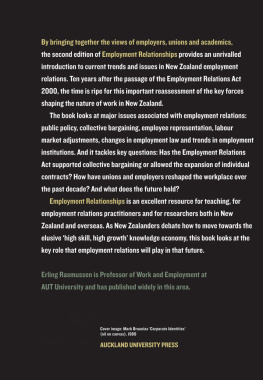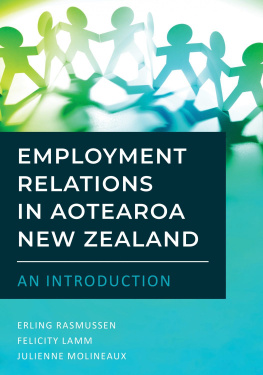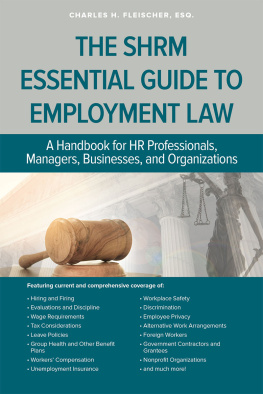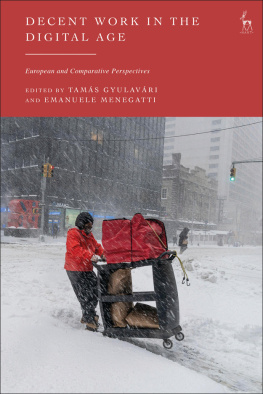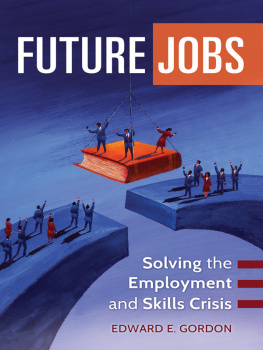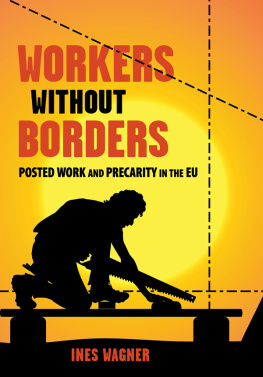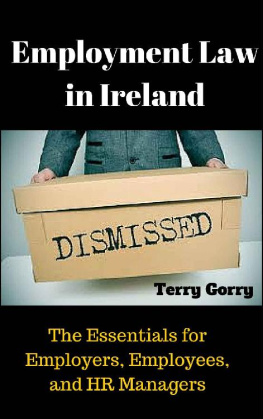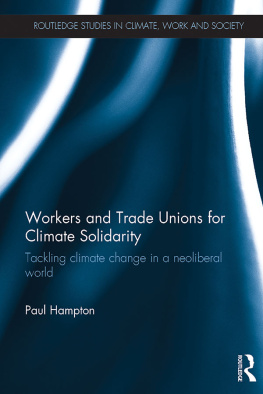EMPLOYMENT RELATIONSHIPS
EMPLOYMENT RELATIONSHIPS
WORKERS, UNIONS AND EMPLOYERS IN NEW ZEALAND
EDITED BY ERLING RASMUSSEN

First published 2004
New edition published 2010
This ebook edition 2013
Auckland University Press
University of Auckland
Private Bag 92019
Auckland 1142
New Zealand
www.press.auckland.ac.nz
the contributors, 2010
eISBN 978 1 86940 693 6
National Library of New Zealand Cataloguing-in-Publication Data
Employment relationships : workers, unions and employers in
New Zealand / edited by Erling Rasmussen. New ed.
Previous ed.: 2004.
Includes bibliographical references and index.
eISBN 978 1 86940 693 6
1. Labor laws and legislationNew Zealand.
I. Rasmussen, Erling Juul. Il. Title.
344.9301dc 22
This book is copyright. Apart from fair dealing for the purpose of private study, research, criticism or review, as permitted under the Copyright Act, no part may be reproduced by any process without prior permission of the publisher.
Contents
Erling Rasmussen
Erling Rasmussen
Margaret Wilson
Laila Harr
Stephen Blumenfeld
Andrew Caisley
Ian McAndrew
Barbara Burton
Barry Foster and Erling Rasmussen
Helen Kelly
Nigel Haworth
Felicity Lamm
Colm McLaughlin
Erling Rasmussen and Dana Anderson
Foreword
For almost a century, employment relations in New Zealand were dominated by the Industrial Conciliation and Arbitration Act 1894. In 1991, the new National government finally jettisoned that statutory framework, ushering in a new system of reduced union power and individualised employment agreements under the Employment Contracts Act (ECA). In 1999, the new Labour administration was equally swift to replace its predecessors legislation with the Employment Relations Act 2000 (ERA), signalling a shift back to collectivism albeit not a complete return to the compulsory frameworks of the past.
The first edition of this book assessed the new legislation on arrival. Now, with Labours regulatory regime in place for ten years and the return of National to power, the present edition considers issues, changes and trends under the ERA and canvasses some of the major issues associated with employment relations: public policy, trends in collective bargaining, employee representation, labour market adjustments, changes in employment law and movements in the employment institutions.
A range of viewpoints and diverse angles on current employment relations is again provided and readers will find that there has been considerable disagreement over some of the changes introduced in the new millennium. Many of the chapters that follow assume that the reader has a sound knowledge of New Zealand employment relations and a fair grasp of economic, social and labour market trends. As such, this book is not an introductory text and those interested in broader historical or current trends are recommended to consult other sources.
I have enjoyed working with the various authors and I am just sorry that more contributors could not be included. It is fair to say that I do not agree with some of the arguments put forward in these pages, but that is how it should be: real dialogue means that it is possible to agree to disagree. As the various chapters show, New Zealand employment relations has been through some turbulent decades and, once again, it appears that there needs to be a search for some kind of broadly based consensus to overcome unresolved issues. This book facilitates the presentation of different understandings and solutions and I am grateful that the authors all of them very busy people have taken the time to commit their ideas to paper. Likewise, I hope that readers will enjoy the individual contributions and that the book will stimulate much debate.
Erling Rasmussen, December 2009
Introduction
ERLING RASMUSSEN
The Employment Relations Act (ERA) has now been in existence longer than its predecessor the Employment Contracts Act (ECA). As the new millennium has also been an era of major changes in employment relations regulations, practices and labour market outcomes, the decade of the ERA will become a significant part of New Zealands employment relations history. It is also the first time in nearly three decades that radical, sweeping employment relations reforms are not high on the political agenda or being touted as a solution to wider economic and social problems. The chapters in this book point to many of the important employment relations changes which have happened under the ERA as well as some of the changes which have come through associated pieces of legislation or been driven by employers, unions and employees as they adjust to various labour market pressures and opportunities.
The ERA has been a bit of an enigma. Its main aims in terms of building productive employment relationships and promoting collective bargaining have yet to be achieved but it has also ensured that its other aims protection of individual choice, the promotion of mediation and reduction of judicial intervention have been embedded. In many respects, the ERA period has continued several of the features associated with the ECA, including workplace bargaining, individualised arrangements, individual employment rights and an employer aversion to dealing with unions (see the chapters by ).
points out in her chapter, there appears to be a lack of consensus surrounding employment relations. The conflicting ideologies have been evident in the debates over changes to legislation, employment rights and conditions and, more importantly, they have generated contrasting approaches to improve New Zealand employment relations (as witnessed in several of the chapters in this book). With conflicting ideologies at play and pressure to create sustainable, productive employment relationships, it will be interesting to see whether the current low public policy profile of employment relations will continue.
Collective bargaining and unions
The ERA was expected to create a major shift in employment relations, but many of the original expectations (both positive and negative) have not come to pass. In particular, the support of collective bargaining and unionism has coincided with an extraordinary decline in union density in the private sector. There have been some positive gains for unions as highlighted in the chapter by that this legislative fine-tuning has had limited effect (which was already predicted in the previous book on the ERA see Wilson 2004).
The sharp decline in union density in the private sector has probably surprised many observers. Instead, collective bargaining has become a predominantly public sector phenomenon. As high degree de-unionised, this has become an even higher barrier for union recruitment campaigns (see Department of Labour 2009).
The chapters in this book indicate that there is considerable rethinking going on in the union movement in respect of unions role and strategies. It was thought that union ownership of collective employment agreements would constitute an important membership incentive (Deeks and Rasmussen 2002: 124). This obviously only works in already organised workplaces and unions have organised too few new workplaces. There was also the problem of passing on where employers have passed on the union-negotiated improvements to non-union employees. While this may be a rational employer decision (as it saves on transaction costs and avoids diverse employment conditions), it was considered a major disincentive to join the union(s). Interestingly, argues in her chapter that the strong focus on passing on is a particular New Zealand phenomenon and that this provides a narrow view of bargaining which can have negative implications for building support and membership. Instead, Harr suggests that bargaining should be able to be extended to all employees in a workplace and the costs can then be shared if a majority of all employees vote in favour. Likewise, Helen Kelly argues that it is necessary to implement broader protection mechanisms and enhance employee participation rights. In particular, it is necessary to enable collective bargaining results achieved by unions to be available to all workers across industries, including those enterprises not directly involved in the bargaining.
Next page
